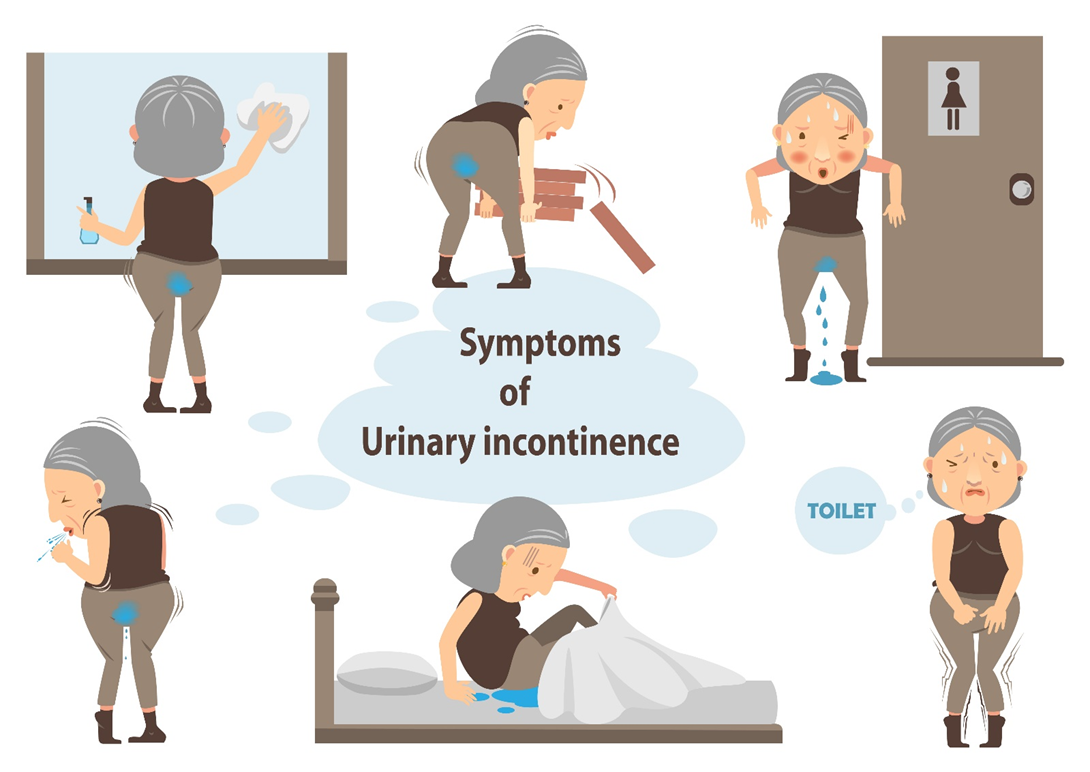Some things that you, as the nurse, might teach your client to help control urinary incontinence include which of the following (Select all that apply)?
Recommending an indwelling urinary catheter
Prompted voiding
Scheduled voiding
Pelvic floor muscle exercises
None of the above
Correct Answer : B,C,D
Choice A reason: Recommending an indwelling urinary catheter is not a good option, as it can increase the risk of urinary tract infections, bladder spasms, and catheter-associated complications.
Choice B reason: Prompted voiding is a technique that involves reminding or prompting the client to void at regular intervals, usually every two to four hours. It can help reduce the frequency and severity of urinary incontinence episodes.
Choice C reason: Scheduled voiding is a technique that involves setting a fixed schedule for the client to void, regardless of their urge or need. It can help prevent bladder overdistension and leakage.
Choice D reason: Pelvic floor muscle exercises, also known as Kegel exercises, are exercises that involve contracting and relaxing the muscles that support the bladder, urethra, and other pelvic organs. They can help strengthen the pelvic floor muscles and improve bladder control.
Choice E reason: None of the above is not a correct answer, as there are three choices that are appropriate for helping the client with urinary incontinence.

Nursing Test Bank
Naxlex Comprehensive Predictor Exams
Related Questions
Correct Answer is ["A","B","C","E"]
Explanation
Choice A reason: Heart failure can cause fluid retention, which can lead to dehydration if the fluid is not properly balanced.
Choice B reason: Functional impairments can limit the ability to drink or access fluids, which can increase the risk of dehydration.
Choice C reason: Longitudinal furrows on the tongue are a sign of dehydration, as the tongue loses moisture and becomes dry and cracked.
Choice D reason: Hypertension is not directly related to dehydration, although it can be affected by fluid intake and electrolyte balance.
Choice E reason: Diabetes can cause increased urination, which can lead to dehydration if the fluid loss is not replaced.
Correct Answer is B
Explanation
Choice A reason: This is incorrect because over-the-counter NSAIDs are not generally harmless, especially for older adults. NSAIDs can cause gastrointestinal bleeding, renal impairment, hypertension, and increased risk of cardiovascular events. Older adults are more susceptible to these adverse effects due to age-related changes in pharmacokinetics and pharmacodynamics, as well as the presence of comorbidities and polypharmacy. Therefore, NSAIDs should be used with caution and at the lowest effective dose for the shortest duration possible in older adults.
Choice B reason: This is correct because stool softeners and laxatives should be used with opioids. Opioids can cause constipation, which can lead to abdominal pain, nausea, vomiting, fecal impaction, and bowel obstruction. Older adults are more prone to constipation due to decreased intestinal motility, reduced fluid intake, and use of other medications that affect bowel function. Therefore, stool softeners and laxatives should be prescribed along with opioids to prevent and treat constipation in older adults.
Choice C reason: This is incorrect because opioids are not less effective in older clients than in younger clients. Opioids are potent analgesics that can relieve moderate to severe pain in older adults. However, opioids can also cause respiratory depression, sedation, confusion, delirium, falls, and dependence. Older adults are more sensitive to these side effects due to altered pharmacokinetics and pharmacodynamics, as well as the presence of cognitive impairment and frailty. Therefore, opioids should be used with caution and at the lowest effective dose for the shortest duration possible in older adults.
Choice D reason: This is incorrect because the dose limit for acetaminophen is not difficult to reach for older adults. Acetaminophen is a safe and effective analgesic for mild to moderate pain in older adults. However, acetaminophen can cause hepatotoxicity, especially at high doses or in combination with other medications that contain acetaminophen. The recommended maximum daily dose of acetaminophen for older adults is 3 grams, which can be easily reached if the patient is not aware of the amount of acetaminophen they are taking. Therefore, acetaminophen should be used with caution and at the lowest effective dose for the shortest duration possible in older adults.
Whether you are a student looking to ace your exams or a practicing nurse seeking to enhance your expertise , our nursing education contents will empower you with the confidence and competence to make a difference in the lives of patients and become a respected leader in the healthcare field.
Visit Naxlex, invest in your future and unlock endless possibilities with our unparalleled nursing education contents today
Report Wrong Answer on the Current Question
Do you disagree with the answer? If yes, what is your expected answer? Explain.
Kindly be descriptive with the issue you are facing.
